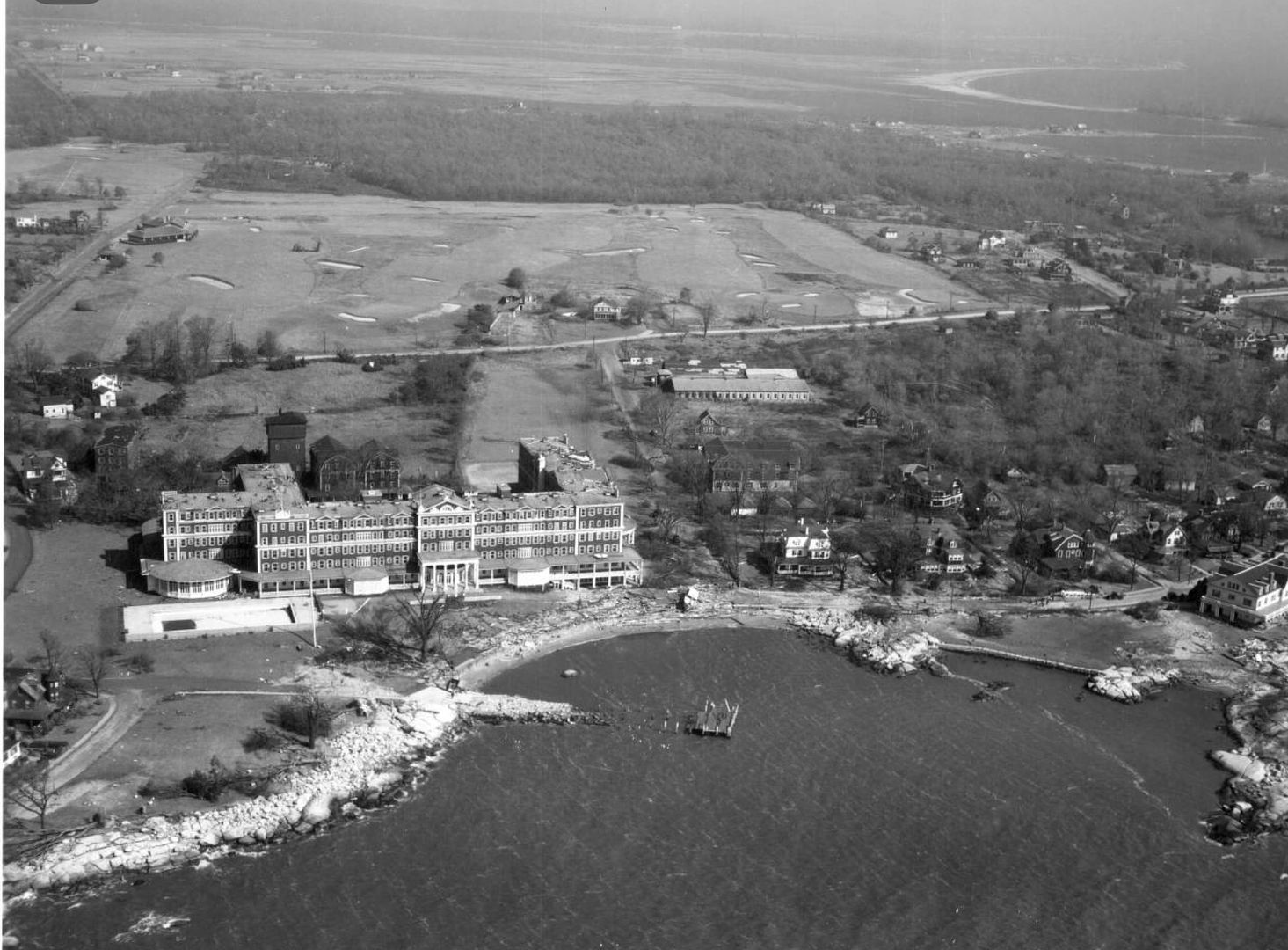Salmon Brook Country Club-Granby, CT (NLE)36 Holes:
1930-1931 American Annual Golf Guide 18 Holes, 6,100 Yards, Par 71
9 Holes, 2,280 Yards, Par 35
9 Holes, 1,000 Yards, Par 27
Designed by Orrin Smith. Established in 1926.
We are lacking early information on Salmon Brook Country Club. According to an article published in 1943, the club was started in 1926 by Dr. Ernest R. Pendleton. Dr. Pendleton wanted a golf course nearby his hospital in Granby. The course started with nine holes and gradually grew into 36 holes by 1931. The facility was privately owned but considered a pay-as-you-play golf course. Salmon Brook Country Club closed in 1943. Twenty years later a push was made to rebuild a course on the site of Salmon Brook with little opposition at first. However, the plan ultimately fell apart and today the site is home to Salmon Brook Park.
Salmon Brook advertisement. (Includes Clarkhurst)
The Hartford Courant, July 17, 1930: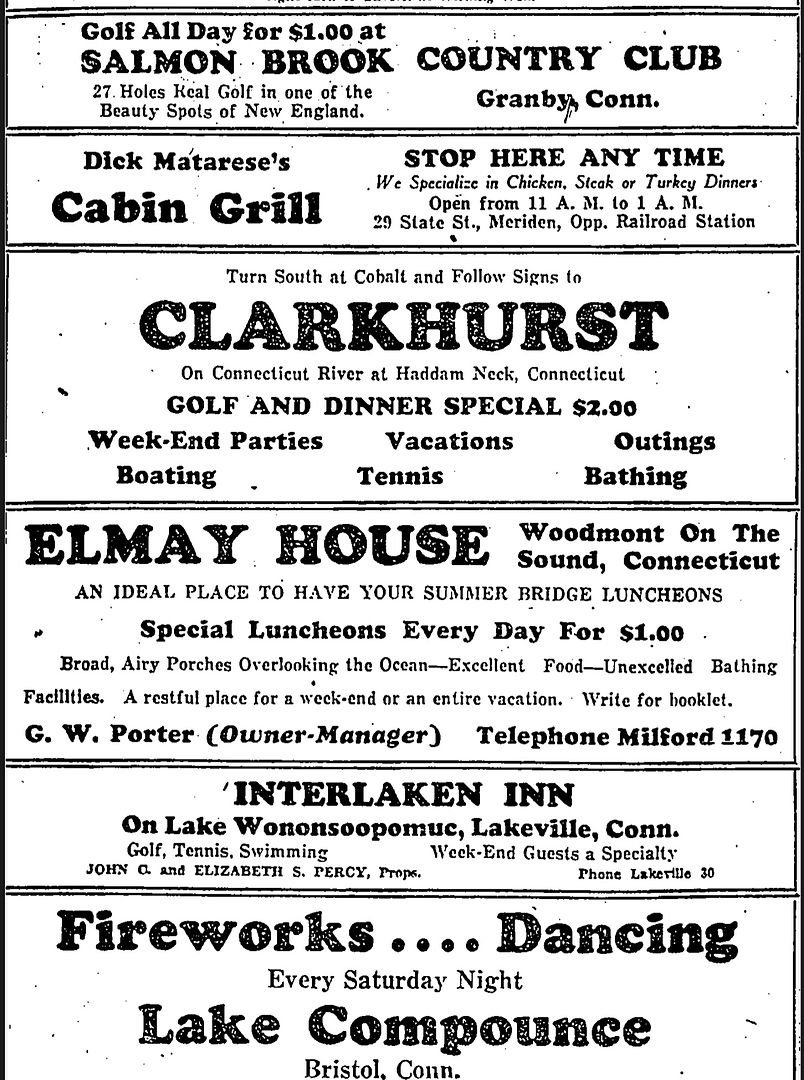
Salmon Brook is sold in 1943:

Attempt to resurrect Salmon Brook in 1963:
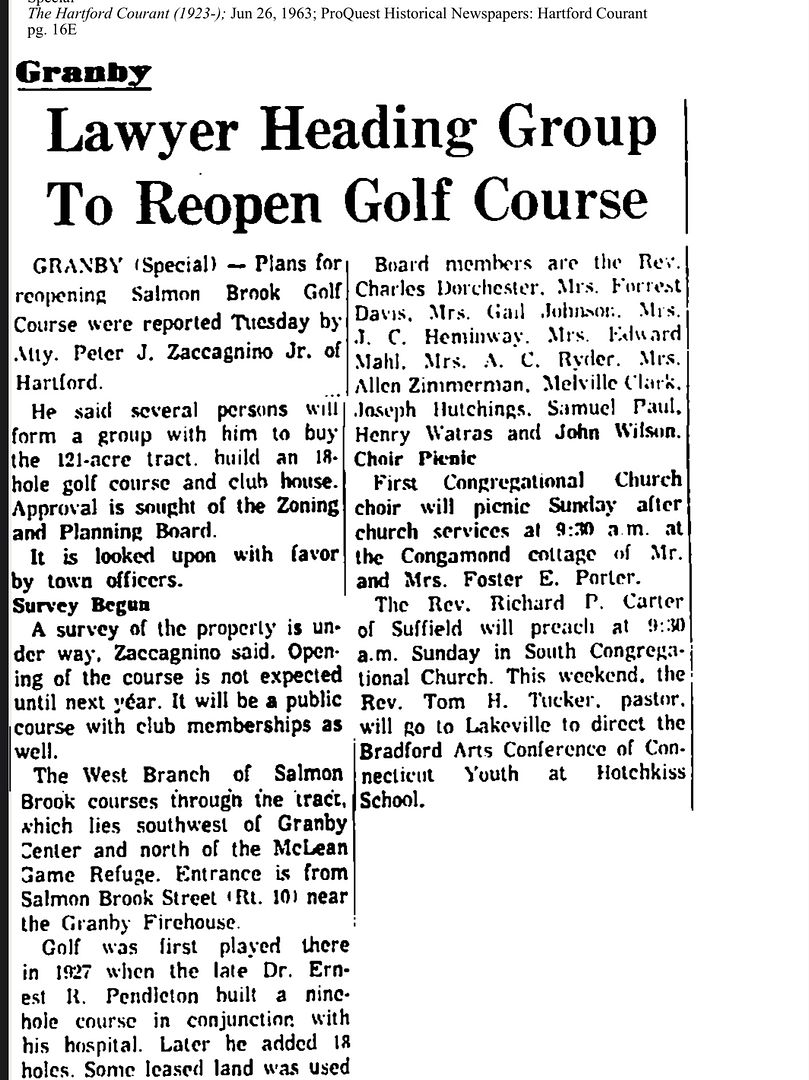
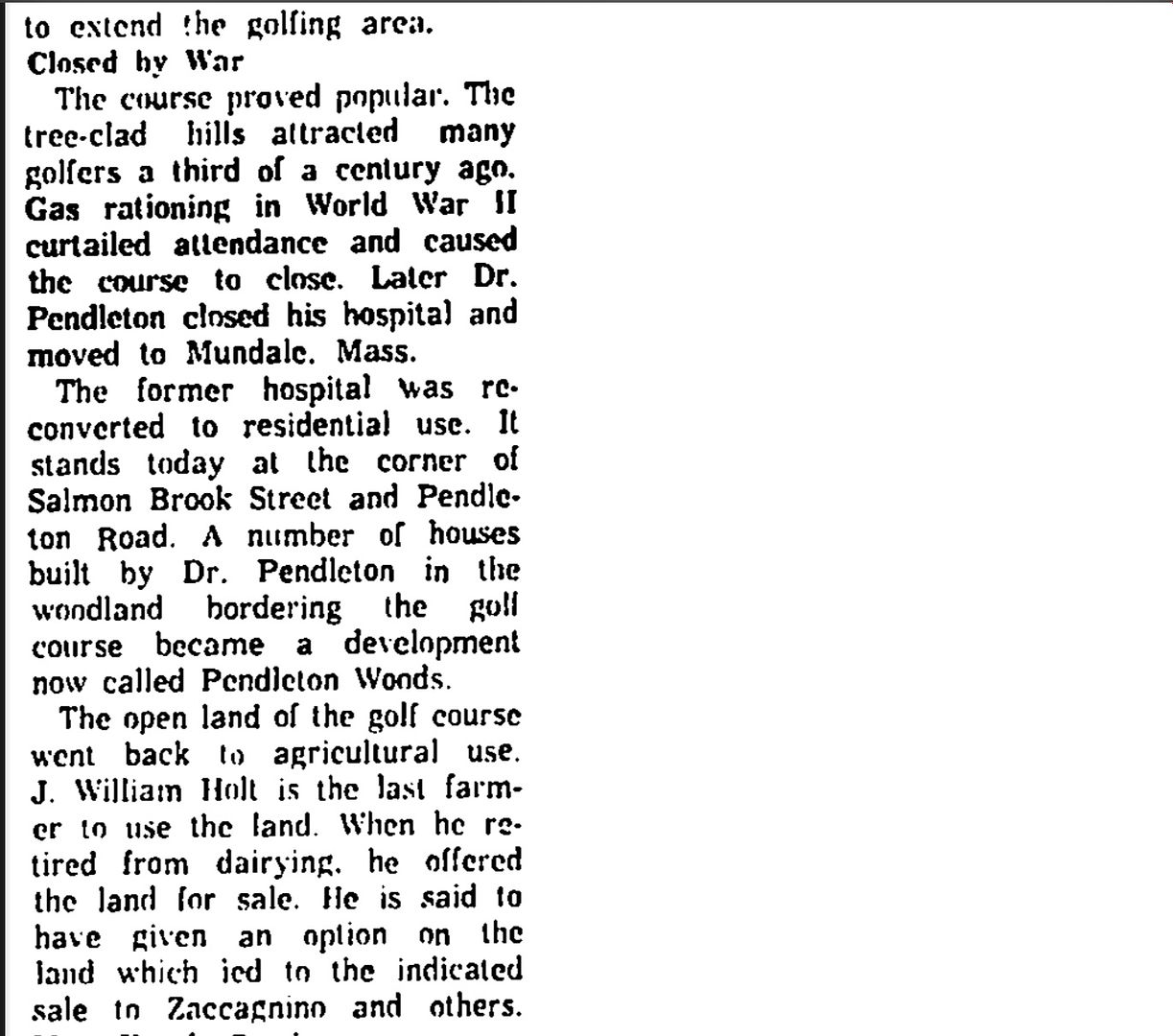
1934 Aerial showing eastern portion of the course:
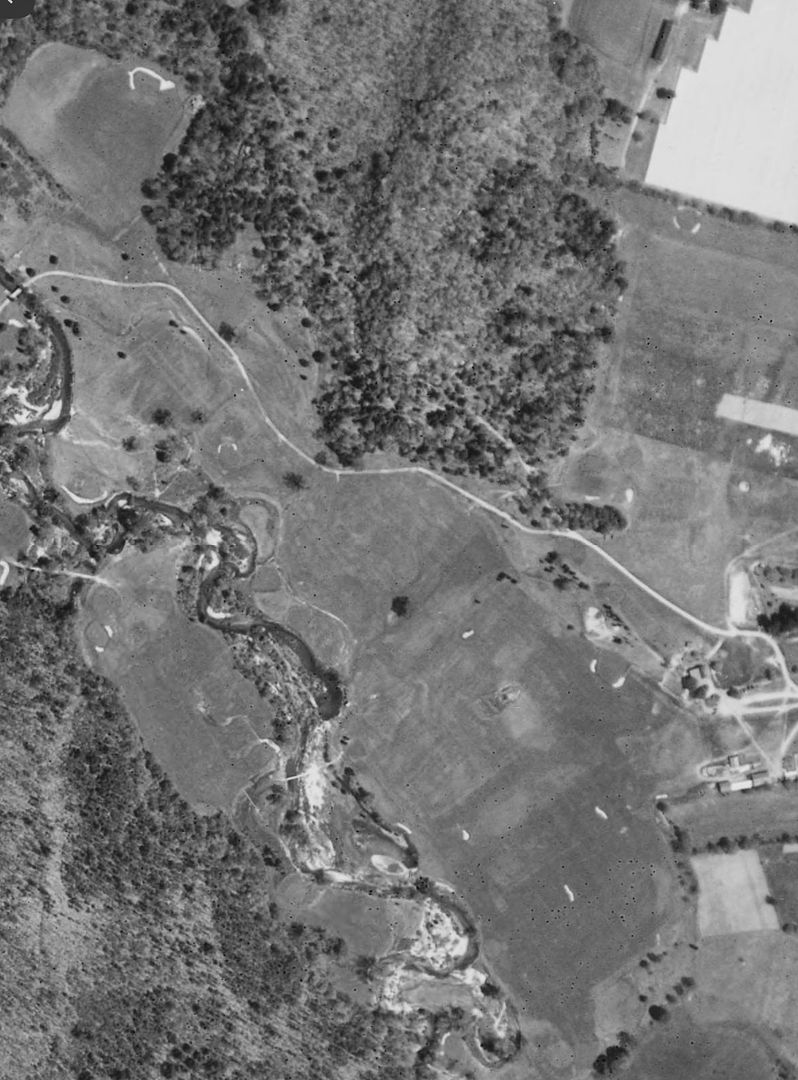 Connecticut State Library, State Archives Record Group 089:11a, Records of the Department of Transportation.
Connecticut State Library, State Archives Record Group 089:11a, Records of the Department of Transportation.1934 Aerial showing western portion of the course:
 Connecticut State Library, State Archives Record Group 089:11a, Records of the Department of Transportation.
Connecticut State Library, State Archives Record Group 089:11a, Records of the Department of Transportation.1934 Aerial (36-Hole Course)
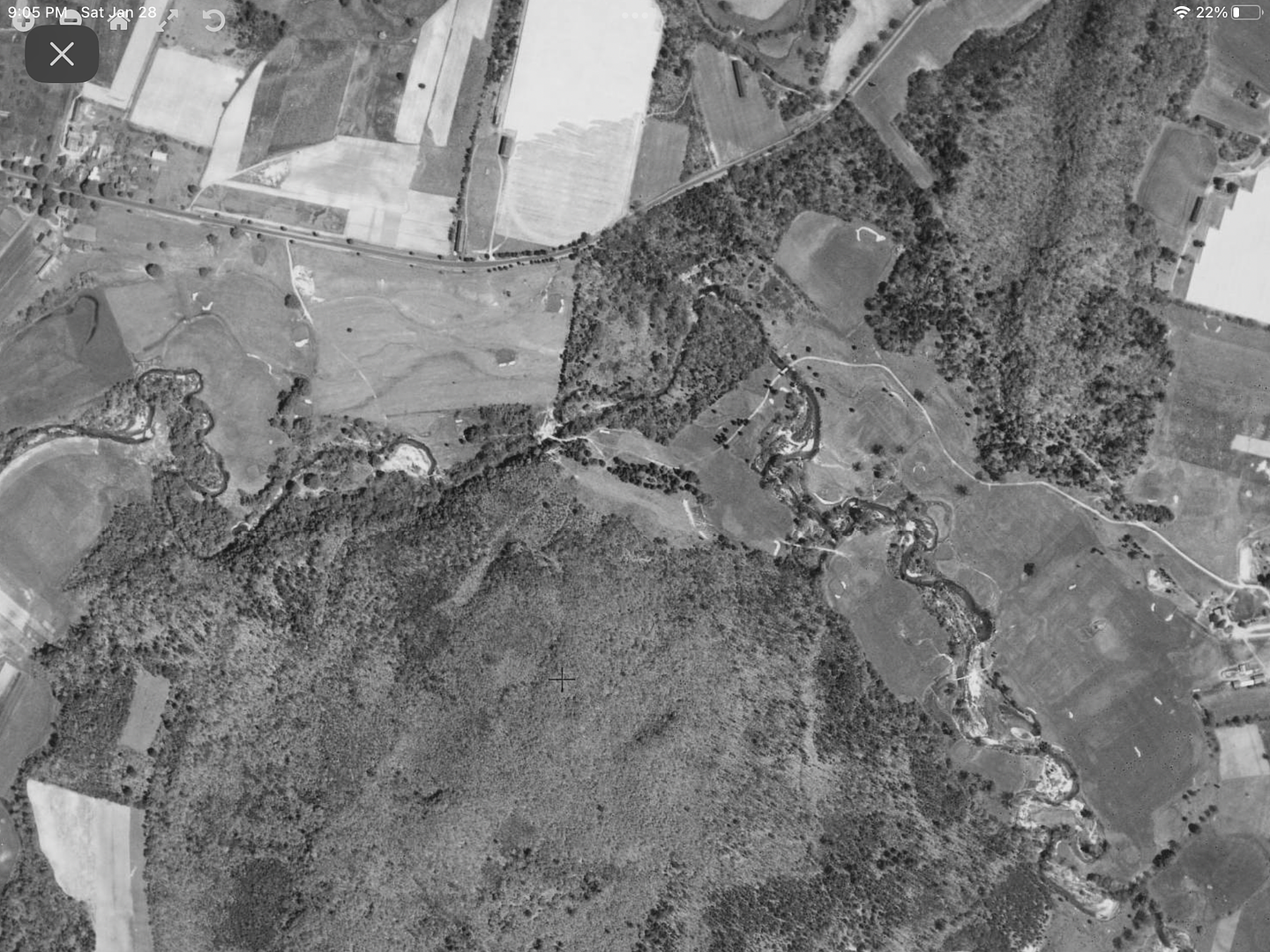 Connecticut State Library, State Archives Record Group 089:11a, Records of the Department of Transportation.Sharon Country Club-Sharon, CT
Connecticut State Library, State Archives Record Group 089:11a, Records of the Department of Transportation.Sharon Country Club-Sharon, CT9 Holes, 2,600 Yards, Par 34:
1929 American Annual Golf Guide Designed by Unknown. Established in 1900.
Sharon Country Club has been around since the turn of the last century. The club still exists on the same piece of property theyíve used since 1900, gradually expanding their borders as the club continued to grow. Sharonís golf course has been reconfigured on several occasions with very little information on who did the work. In 1929, there was a report that eight of the nine holes would be redesigned, but no information on the architect was provided. The layout we see in 1934 is likely the result of that work.
Todayís holes 6, 7, 8 and 9 still follow the 1934 routing and design closely. The first 5 holes have been completely redesigned since 1934. Todayís 1st, 4th and 5th holes were added sometime between 1934 and 1956. The 5th hole was shifted slightly to the south of the 1934 version, playing to a new green site. Todayís 2nd and 3rd holes were added on new property between 1956 and 1969. The club believes Al Zikorus did the work on todayís 2nd and 3rd holes.
Sharon Country Club is set high in the hills with beautiful views of the surrounding countryside. The club maintains a 3-hole practice course near the clubhouse, using the land from their 1900 course. The golf course is currently being renovated by Matt Dusenberry, who has reinstated the center-line hazard on the 6th hole (missing in the modern aerial). He has also been expanding the greens and made additional modifications to improve the playability of the golf course. A few of the greens are very interesting, including the Par 3, 4th hole which was built sometime after 1934.
1934 Aerial
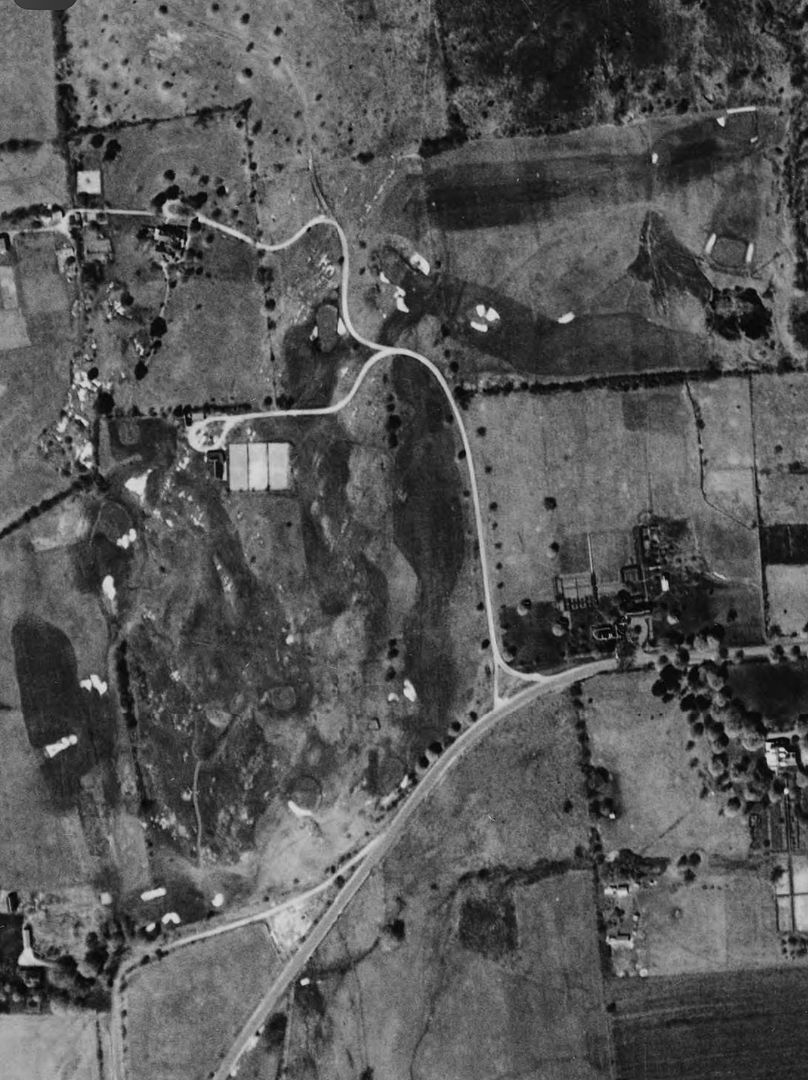 Connecticut State Library, State Archives Record Group 089:11a, Records of the Department of Transportation.
Connecticut State Library, State Archives Record Group 089:11a, Records of the Department of Transportation.Modern Aerial showing same area as 1934.

Modern Aerial showing todayís 9-hole course.
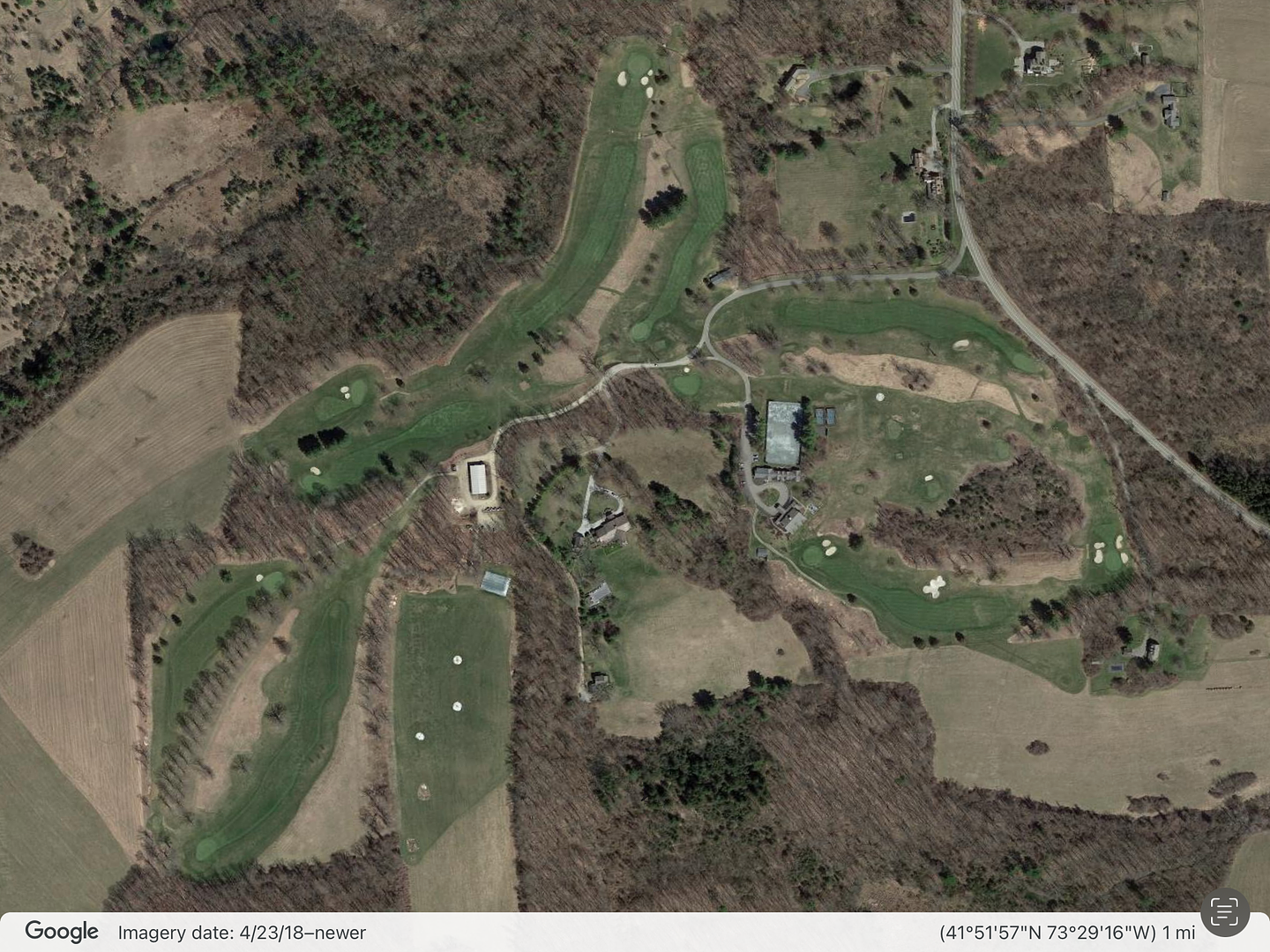 Shennecossett Golf Course-Groton, CT. FKA Shenecossett Country Club
Shennecossett Golf Course-Groton, CT. FKA Shenecossett Country Club.
18 Holes, 6,512 Yards, Par 72:
1930-1931 American Annual Golf Guide Designed by Donald Ross in 1914. Redesigned by Donald Ross in 1919.
Established in 1898.
Golf at Shennecossett dates back to 1898. The 1899 Golf Guide lists Eastern Point Golf Club as the only golf course in Groton. The entry suggests that Tom Bendelow laid out the course. The following year, the club was referred to as the Shenecossett Golf Club and the entry reiterated that the course was laid out by Tom Bendelow in September 1898. In 1905, Morton Plant began building his great hotel called The Griswold along the shore of the Thames River. The Shenecosset Country Club would eventually become associated with Morton Plant and The Griswold Hotel.
In 1914 Plant provided a clubhouse which greatly increased the course's popularity. Plant also hired Donald Ross around 1914 to design an up-to-date 18-hole golf course on the property. When Ross was finished, the course measured 6,020 yards. In 1918 Morton Plant died and the hotel and golf course begin to operate under new management. Donald Ross was called back to Shenecossett in 1919 to make a few modifications to the routing which extended the course to 6,215 yards. By 1926, the course had been lengthened to 6,512 yards. The golf course and clubhouse were taken over by the Town of Groton in the late 1960's and opened up to the general public as a municipal golf course. The golf course remained unchanged until 1997 when the Town of Groton agreed to a land swap with their neighbor Pfizer.
In the late 1990's, Mark Mungeam was hired to design three new holes on the property that once housed the Griswold Hotel. He built today's 15th, 16th and 17th holes to replace Ross' original 5th, 6th and 7th holes. Mungeam modified today's 5th and 8th holes on the front nine, while adding a new Par 3, 9th hole. On the 5th hole, Mungeam created a Par 5 by extending a previous Ross hole from the tee and leaving the Ross green. On the 8th hole, Mungeam added yardage by combining a Ross Par 5 with a Ross Par 3 to make a longer Par 5. He shifted the hole and built a new green for today's 8th, which ultimately eliminated two Ross greens. On the back nine Mungeam built the three holes mentioned earlier while making alterations to Ross' 18th hole. Mungeam changed the 18th into a Par 5 by extending the tee and adding a new green. Ross' original 18th green still exists on the property. Today this green is used as a chipping/practice green near the clubhouse.
Borrowing a few images from Svenís Ross thread.
Early story on the Donald Ross golf course
. The Day., July 11, 1914: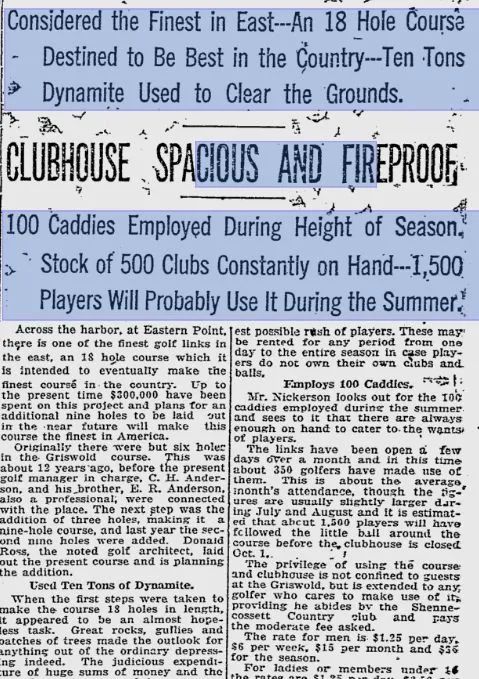
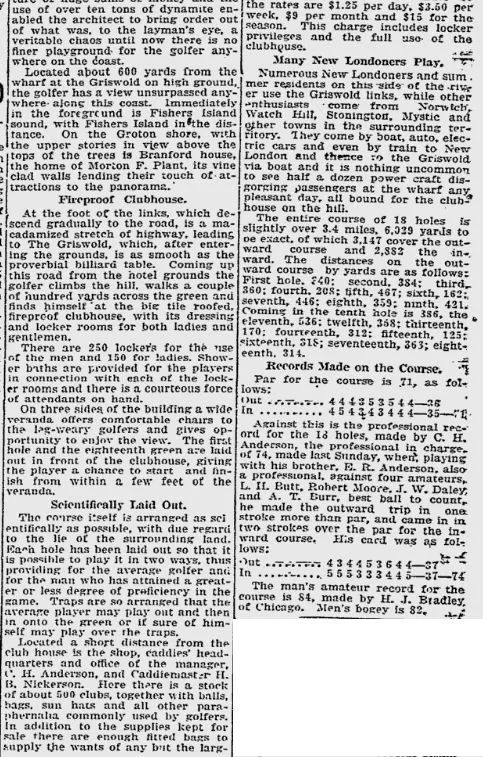
Link to the City of Grotonís scorecard collection:
https://www.groton-ct.gov/departments/parksrec/shenny/historical_scorecard_gallery.phpEarly Photos from the Course.
U
SGA Golf Bulletin., 1915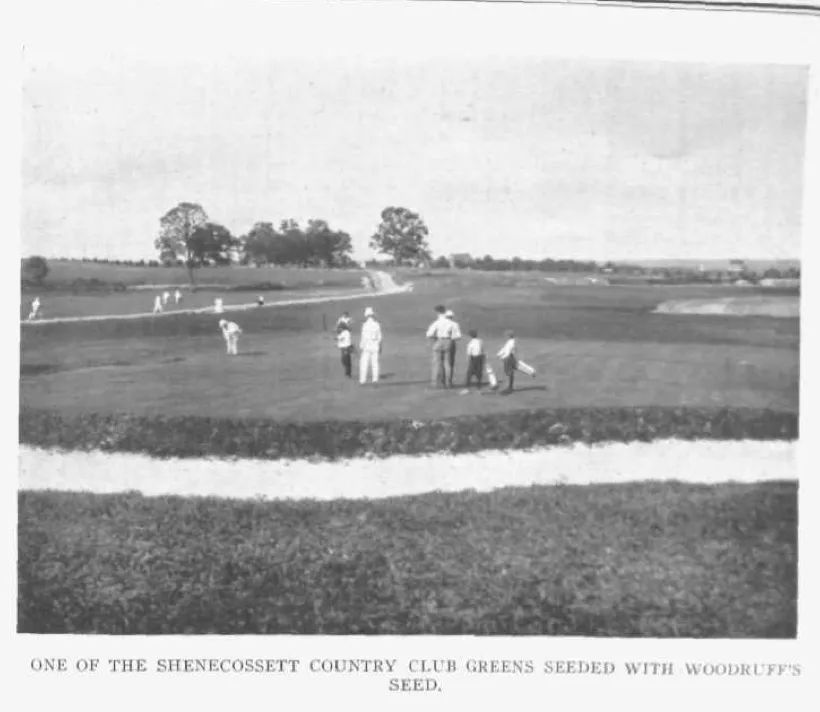
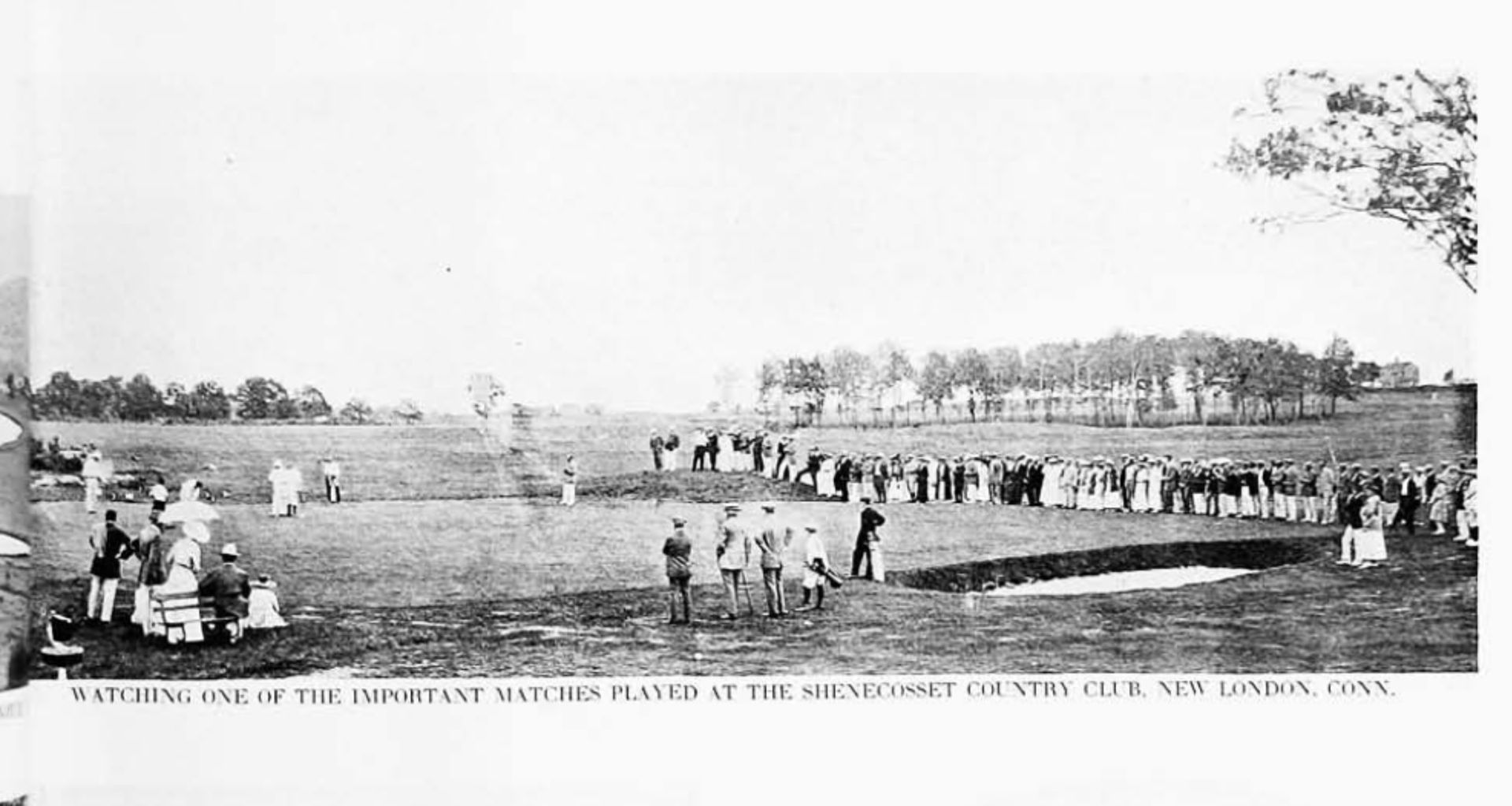
1919 Course Layout:
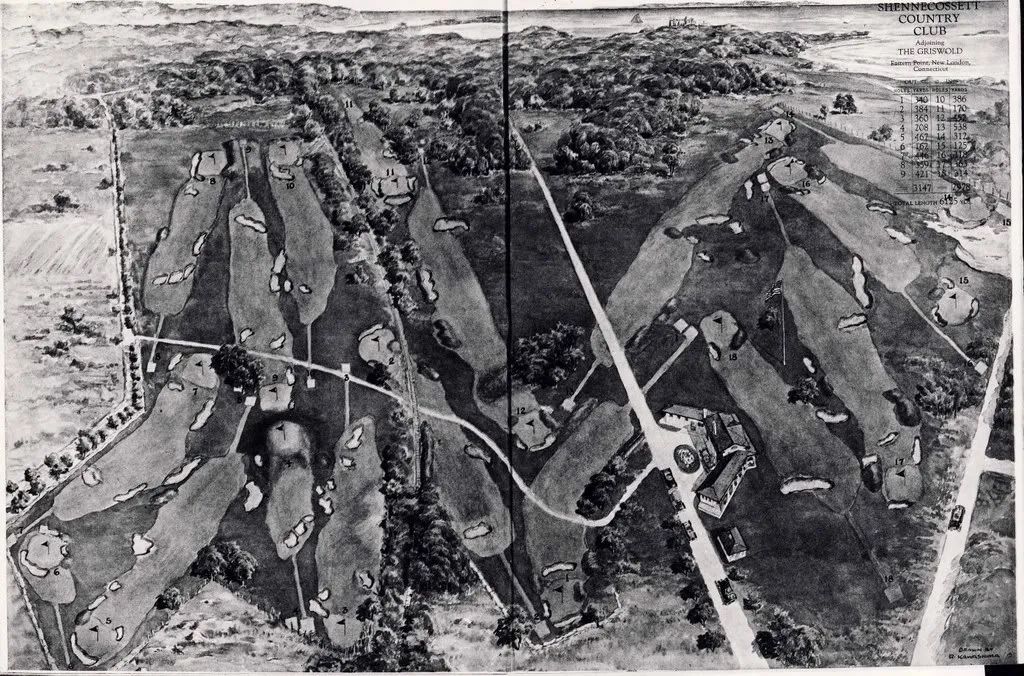
Oblique Aerial showing 3 of the holes lost in the 1990ís (lower left)

1920 American Annual Golf Guide Cover Advertisement:

1934 Aerial
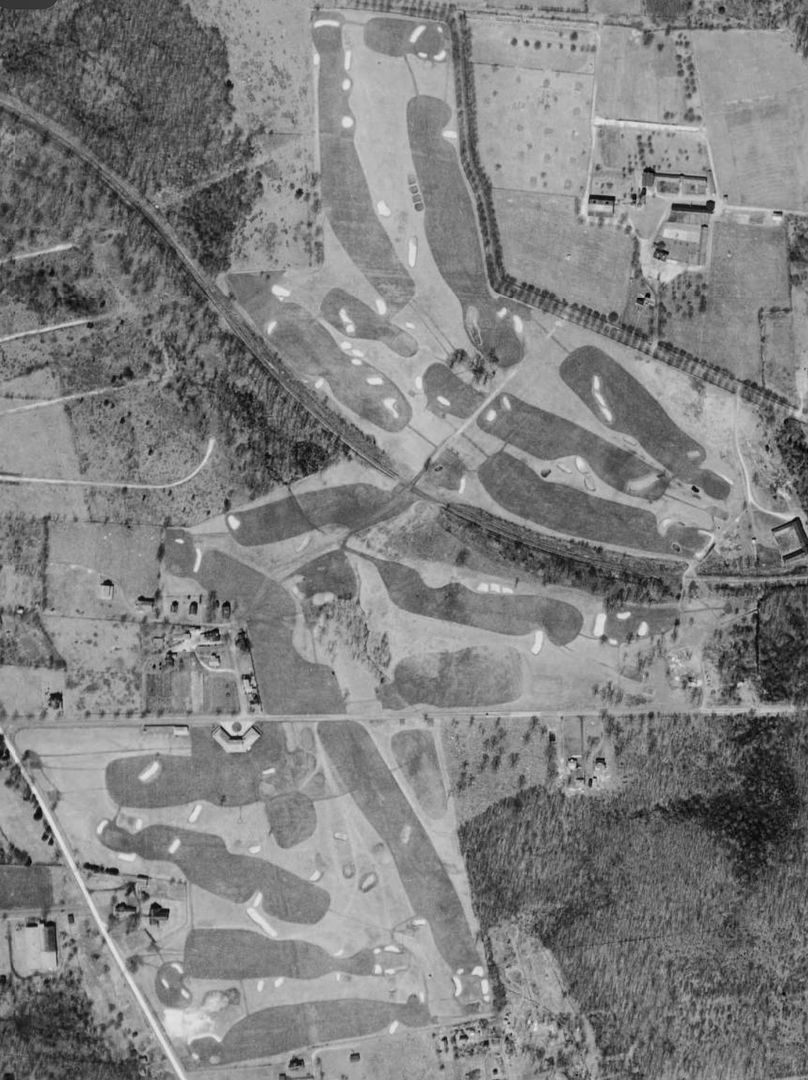 Connecticut State Library, State Archives Record Group 089:11a, Records of the Department of Transportation.
Connecticut State Library, State Archives Record Group 089:11a, Records of the Department of Transportation.Modern Aerial showing the same area as 1934.
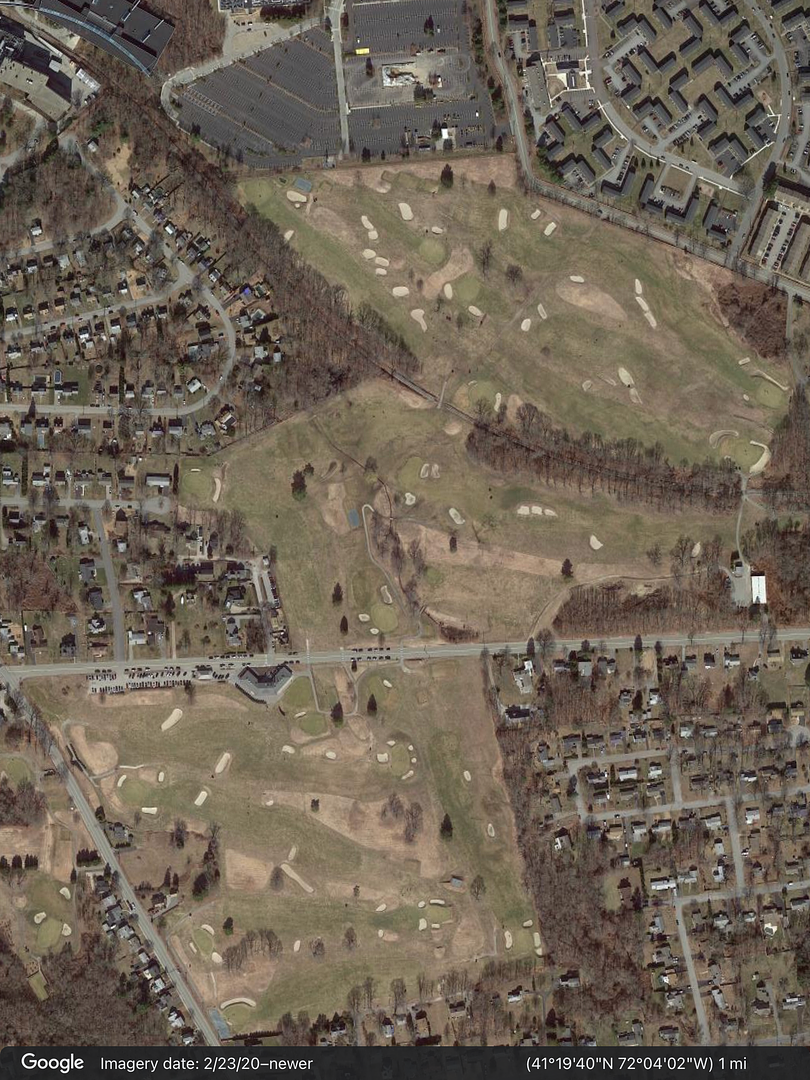
Modern Aerial showing todayís 18-hole course.

1938 Aerial showing hurricane damage to The Griswold Hotel.
